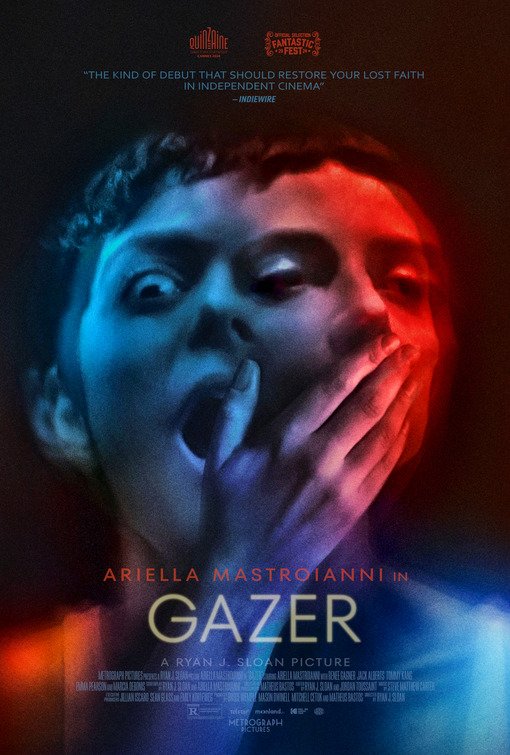Neo-noir "GAZER" (2024) Will Make You Doubt Your Reality (REVIEW)
Losing time is one of my primary fears. Having dealt with a grandparent who experienced dementia while I was in high school, the idea that you can be doing something then a millisecond later you can be on a completely different task has always been terrifying to me. What happened in the interim? What if you were taking care of someone or something important? Now imagine you’re in a modern film noir like “Gazer,” the feature debut from Ryan J. Sloan.
Frankie (Ariella Mastroianni who stars and co-wrote the film with Sloan) exists on the fringes of society. She lives alone in a spare apartment, under the ever-present threat of eviction. Her husband is dead and she doesn’t even have custody of her young daughter. The root cause of her desperate situation isn’t addiction or a checkered past like we see in other film noirs, but rather a condition. Frankie suffers from a very specific type of brain damage known as dyschronometria. Basically she can’t accurately experience the passage of time. As if this wasn’t bad enough, it means she can’t even hold down a job pumping gas.
Just when the downtrodden Frankie appears on the brink of disappearing into thin air, hope arrives in the form of a mysterious woman who offers her $3,000 to pick up a car and deliver it to a designated spot. That’s it. No questions asked. If only it was as simple as the usual TaskRabbit gig. When the job turns out to be more than a ruse, Frankie is drawn into a web of deceit and intrigue that’s exacerbated by her condition. Can she figure out what’s happening to her and ensure the safety of her child? What does it feel like when time runs out if you don’t experience time like everyone else?
“Gazer” is less of a horror film than an avant garde thriller in the vein of “Pi,” “Brick,” and of course “Memento.” SInce smartphones and digital technology trigger her condition, Frankie utilizes cassette recordings to guide her through everyday tasks, and eventually to help her get out of the widening gyre she finds herself in. This adds another barrier to the outside world she has to overcome, not that the film’s Newark, New Jersey setting feels appealing. Sloan and cinematographer Matheus Bastos make the streets feel desolate, compounding Frankie’s isolation.
SInce Frankie appears in every scene, it’s easy to see how a lesser actress would have sunk the film completely. Thankfully, Mastroianni is captivating until the very end. Her big, expressive eyes and small frame add a fairy tale quality to the film, as if we’re watching a twisted lo-fi “Alice in Wonderland.” The dark, gritty aesthetic brings to mind the films of Glass Eye Pix. It’s as if Larry Fessenden would cameo at any moment. Still, the film’s nearly two-hour runtime doesn’t do it many favors. The plot simply isn’t byzantine enough for that length, though you’re always invested. There are a few dream sequences where Frankie encounters some unexpected Cronenbergian elements. The practical effects are impressive for an indie like this, but they feel a little out of place. It feels like Sloan and Mastroianni are workshopping their next project in front of us, which I understand to an extent, but it feels incongruous with the rest of the film.
Sloan and Mastroianni wear their influences on their sleeves by hitting the major beats you’d find in film noir: the scene where Frankie tails someone, the scene where she lies about her identity to question a neighbor (hey there character actress Marcia DeBonis!). There’s a cop with unknown motivations bringing her in for questioning, a dissonant, jazzy score, and of course, an ending that lingers. The final scene reads as downbeat or ambiguous, depending on the viewer, which is what you’re aiming for in a film like this. It may take a while to get there, but you’re never bored. If their next film is a film noir with more fleshed-out (sorry) body horror, sign me up.
Stay up to date with “The Dark Side Of Pop Culture” by following Macabre Daily on Instagram, Facebook, and BlueSky!















